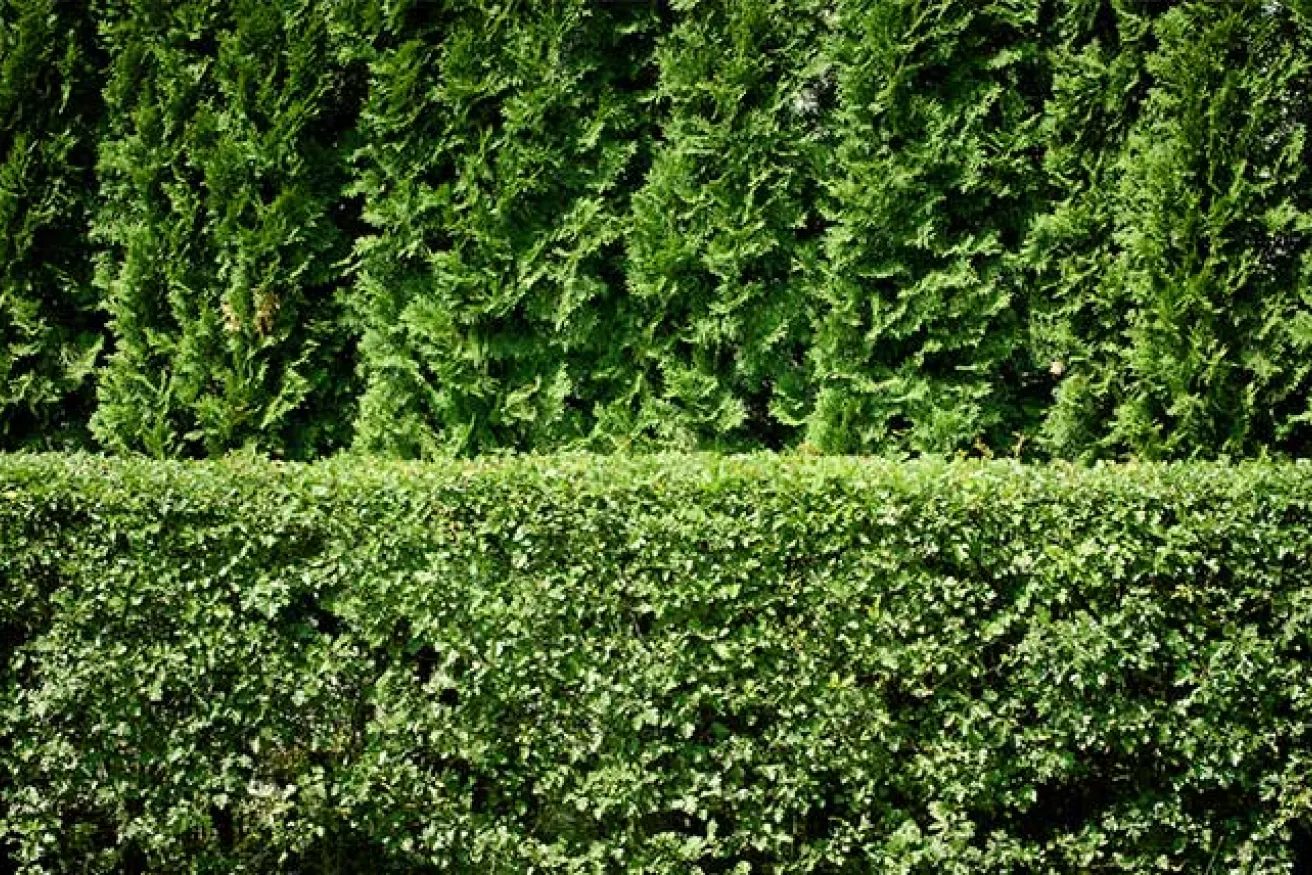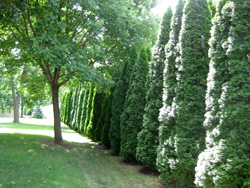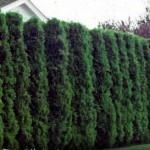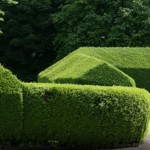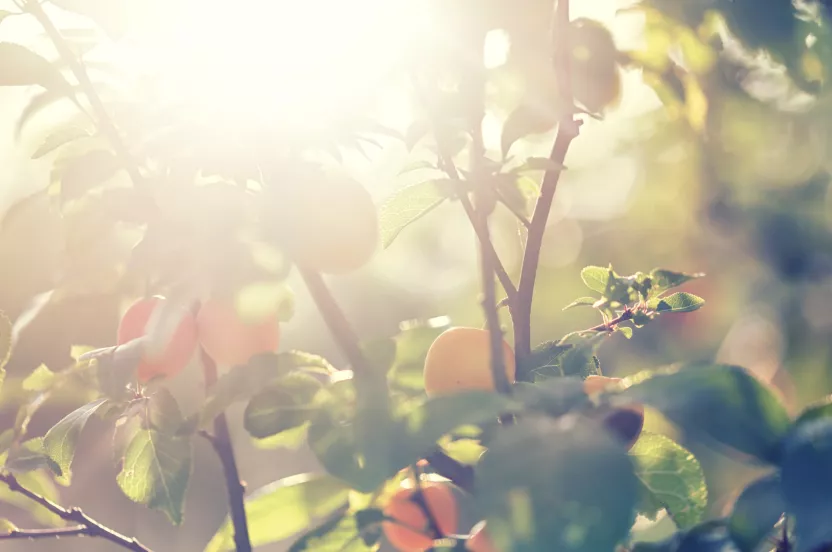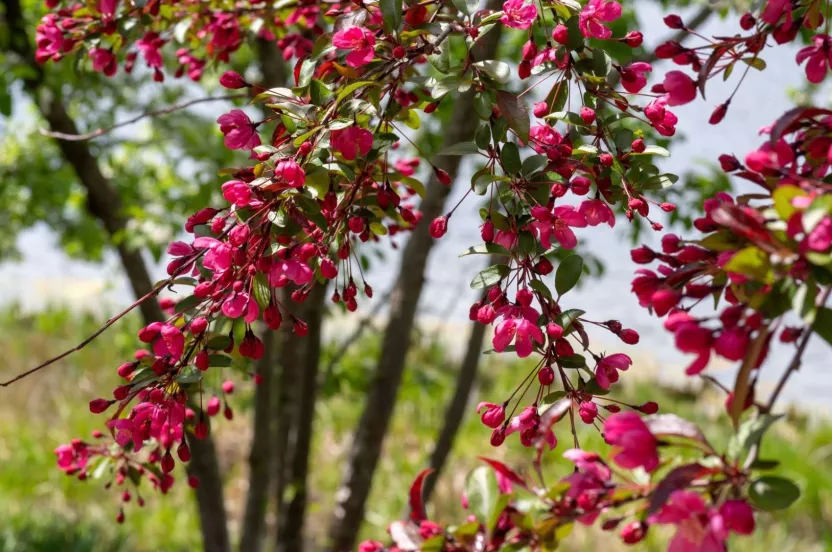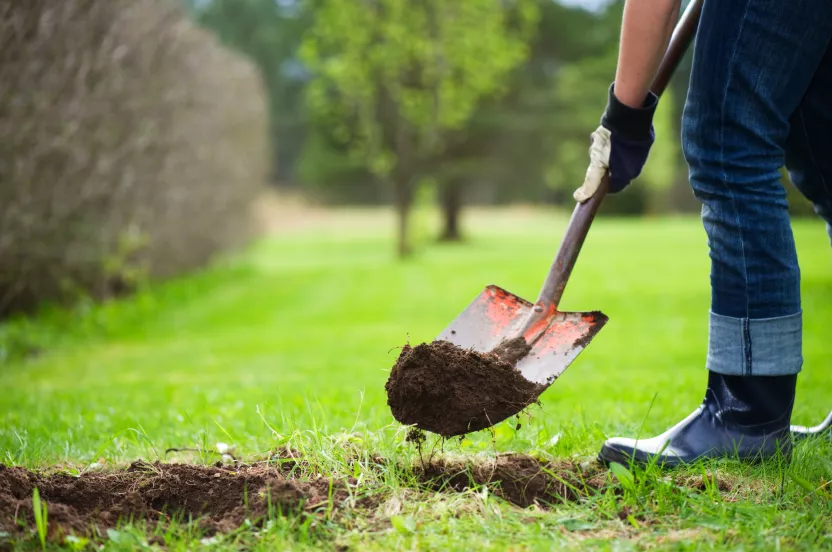Now live: The 2025 Canopy Report. Learn how Americans see trees. GET THE REPORT
Planning your Privacy Screen
When designing your yard you may want to take into account your privacy needs. Do you need a good screen to reduce traffic noise or prevent passersby from looking into your yard? In fact the main advantages of having a living privacy screen are: protection from the elements, an improved view from your house, and less intrusion from pedestrians or neighbors.
Getting organized requires making some important decisions before starting out. The first factor to take into account is the type of tree you would like to have: Remember that an evergreen will provide you with a year-round screen, whereas a deciduous tree will provide fall color or flowers but not year-round privacy.
Secondly, you also need to plan according to the height and width you want or have available. The height you can get will depend on your choice of tree but the width factor can be controlled by planting multiple rows or careful trimming.
Best Trees for Living Privacy Fence
For instance, the American Arborvitae tree has a pyramidal shape and makes a great windbreaker that requires almost no care. It grows 20’ to 30’ in an urban environment and has a spread of about 12’, which can also be trimmed. While it is important to avoid root crowding when planting in rows, this tree can be planted 3 feet apart.
A good choice of evergreen shrub hedge would be the Emerald Arborvitae. It reaches a height of between 10’ to 15’, and it can be trimmed to 2’ width in a hedge. Planting 2-3 feet apart is recommended though 24’’ is the minimum space you should leave.
On the other hand, the North Privet is a popular deciduous shrub hedge which can grow up to 3’ per year. You can expect a height of about 8’ to 12’ and width of 4’ to 6’, which can be trimmed. Plant about 24’’ apart to avoid root overcrowding.
Training and Trimming Your Hedge
About 1-2 seasons after planting your hedge, you should start paying more attention to the desired shape of your screen.
The tops and sides of your hedge screen may need to be trimmed a few times per year, when you should remove about half the length of the new shoots. Ideally your hedge will be wider at the bottom than at the top, to allow sunlight to reach the lower leaves.
If your screen consists of trees, such as the American Arborvitae mentioned earlier, then natural growth and good pruning is all that is required.
Are you interested in additional trees and shrubs that can be used for privacy screens or hedges? Here is a list of privacy screens and hedges recommend by the Arbor Day Foundation.
